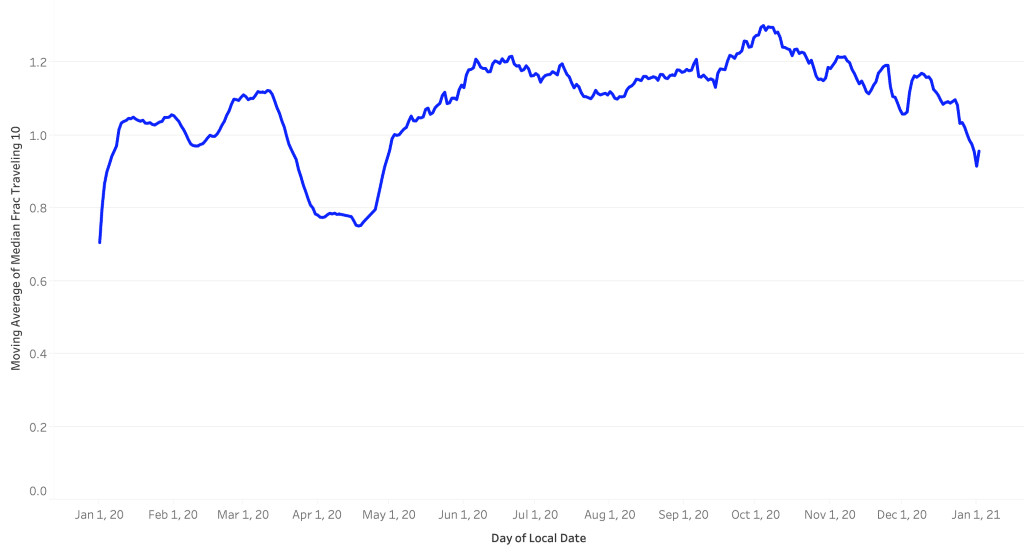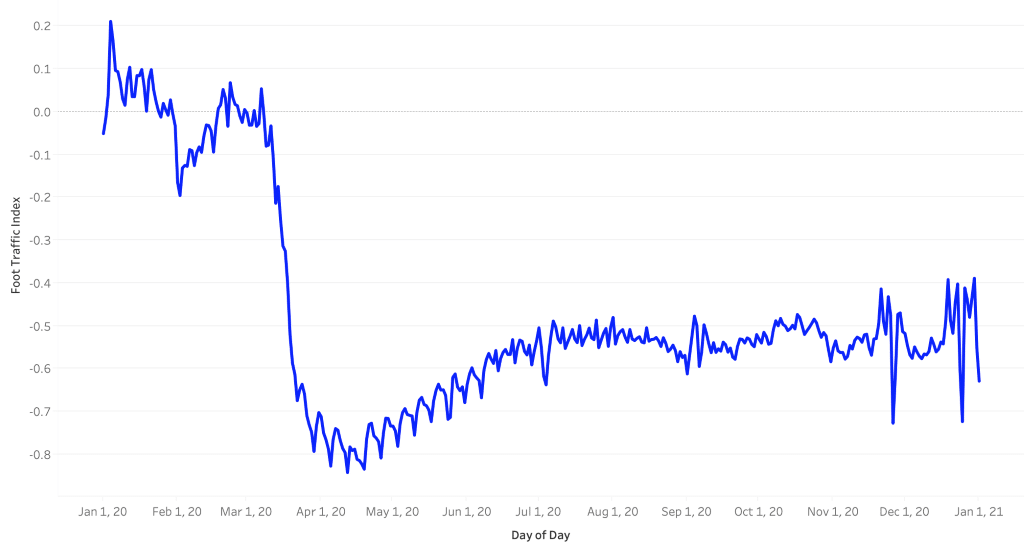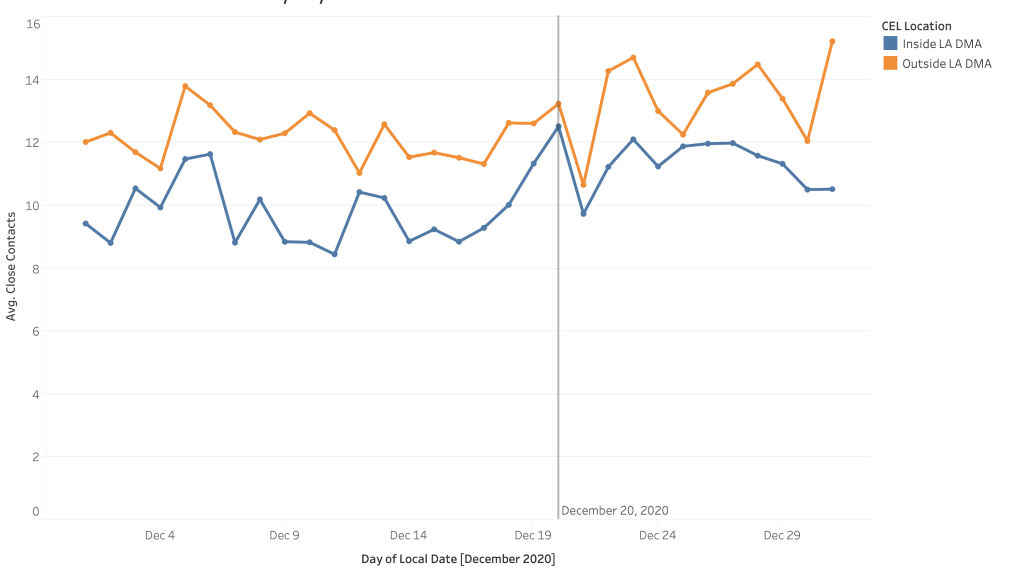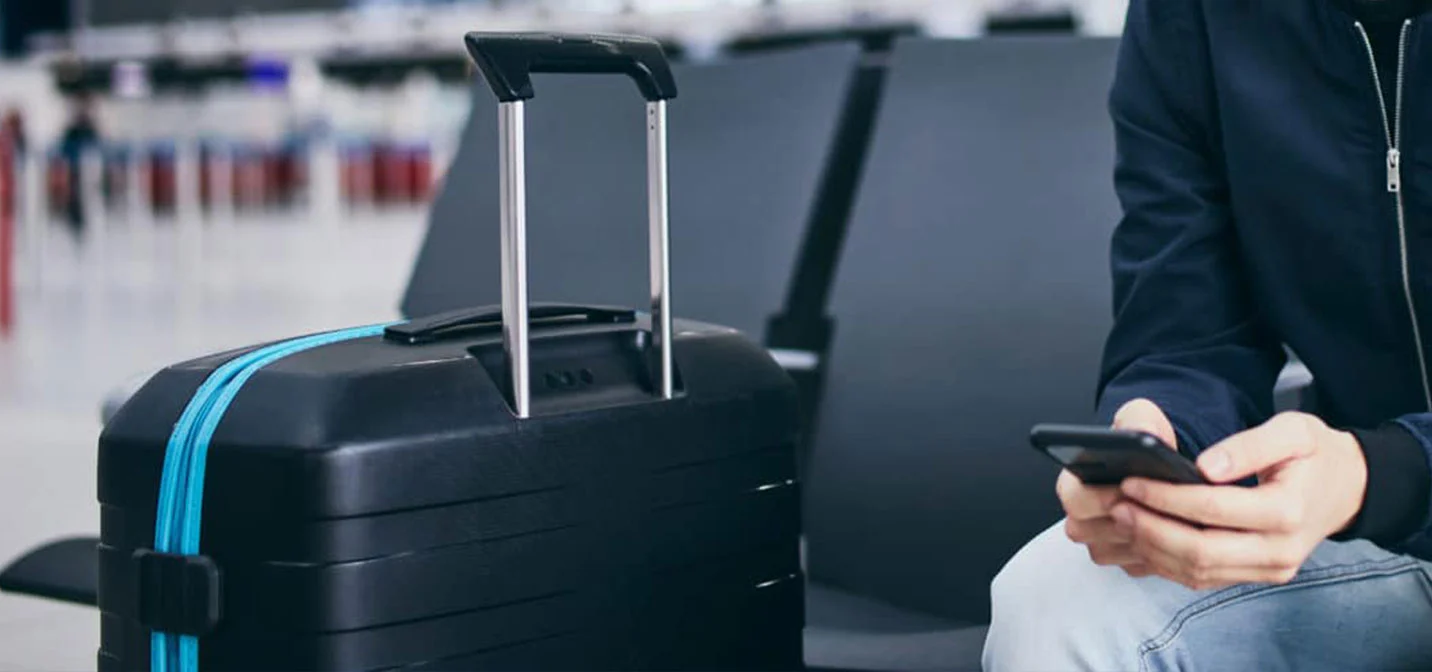People grew complacent in early October and started traveling again.
The country is currently in the grips of the worst surge in Covid cases of the pandemic, and mobile location data helps illustrate how people’s travel habits in the fall contributed to the troubling rise in cases.
Contrary to what one might assume, travel outside the home was at its highest over the Thanksgiving or Christmas holiday weekends. People were actually traveling the most in early October, according to a new analysis of U.S. mobile phone location data conducted by Azira .
Median Fraction of Devices Traveling at least 10 km. Indexed ( 7 Day Rolling Average )

Travel outside the home decreased after that early October peak, though there were spikes at three distinct periods:
- The last few days of October (people celebrating Halloween)
- Late November (i.e. Thanksgiving)
- Early-mid December
Notably, travel was way down on December 31, as people chose to ring in the new year safely at home.
The data may seem head-scratching at first. Travel outside was down over the holidays and is currently at its lowest level since the initial lockdown in spring 2020. And yet cases continue to rage out of control.
But a deeper look helps us glean insight into how travel patterns have contributed the spike in Covid infections.
In early October, Covid cases were trending downward in many regions and many people thought the worst of the pandemic was behind them. That optimism, combined with “quarantine fatigue” (people’s growing frustration with being confined indoors), convinced them it was safe to travel outside their homes.
That, of course, turned out to be a false sense of security. Sure enough, the number of Covid cases nationwide began increasing in mid-October. The spikes in travel on and around the Halloween, Thanksgiving and Christmas holidays exacerbated the already growing number of cases, thus creating the surge, upon a surge, upon a surge many regions are now experiencing.
The data shows that even while people were traveling more, they were in close contact with fewer people.
Median Average Close Contact (7 Day Rolling Average)

Using people mobile location data, Azira identified the average number of people a person was in close contact everyday with throughout the pandemic.
Again, we see a sharp decrease at the beginning of the pandemic, only to see a huge spike in May (possibly for Memorial Day barbecues). The average number spiked again in early October, the same time when people began traveling more, and early December, but was down the remainder of the year.
Taken with the other data, the results seem to suggest that travel outside the home contributed more to the spread of Covid infections than the number of people at the gatherings. That is, it didn’t matter if there were only 10 people at the Christmas party if the people in attendance traveled there from different households and were mingling with people outside their typical circle.
Azira also studied foot traffic into and out of major airports across the country, and the results show similar spikes in activity around the holidays.
Majore Airports Foot Traffic Index

The study shows a steep decline in foot traffic in mid-March, when lockdown orders were first issued in the U.S. Foot traffic gradually inclined in the subsequent months before leveling out in the fall. But there are spikes in foot traffic coinciding with the Thanksgiving and Christmas holidays.
Azira went one step further and then studied if the number of people who traveled to or from Los Angeles International Airport (LAX) increased their number of close contacts after their flight. The analysis showed that no, people didn’t increase their number of close contacts after leaving from or returning to LAX.
Devices Seen in LAX on 12/20/2020

This insight again suggests that travel contributes more to spread than limiting contact with people. Someone might not come into contact with many people traveling, but they’re still interacting with people they don’t see on a regular basis, thus increasing the risk of spread.
The data presented here paints a sobering picture on the relationship between travel and the spread of Covid, but it also exhibits how mobile phone location data can help mitigate the disease.



